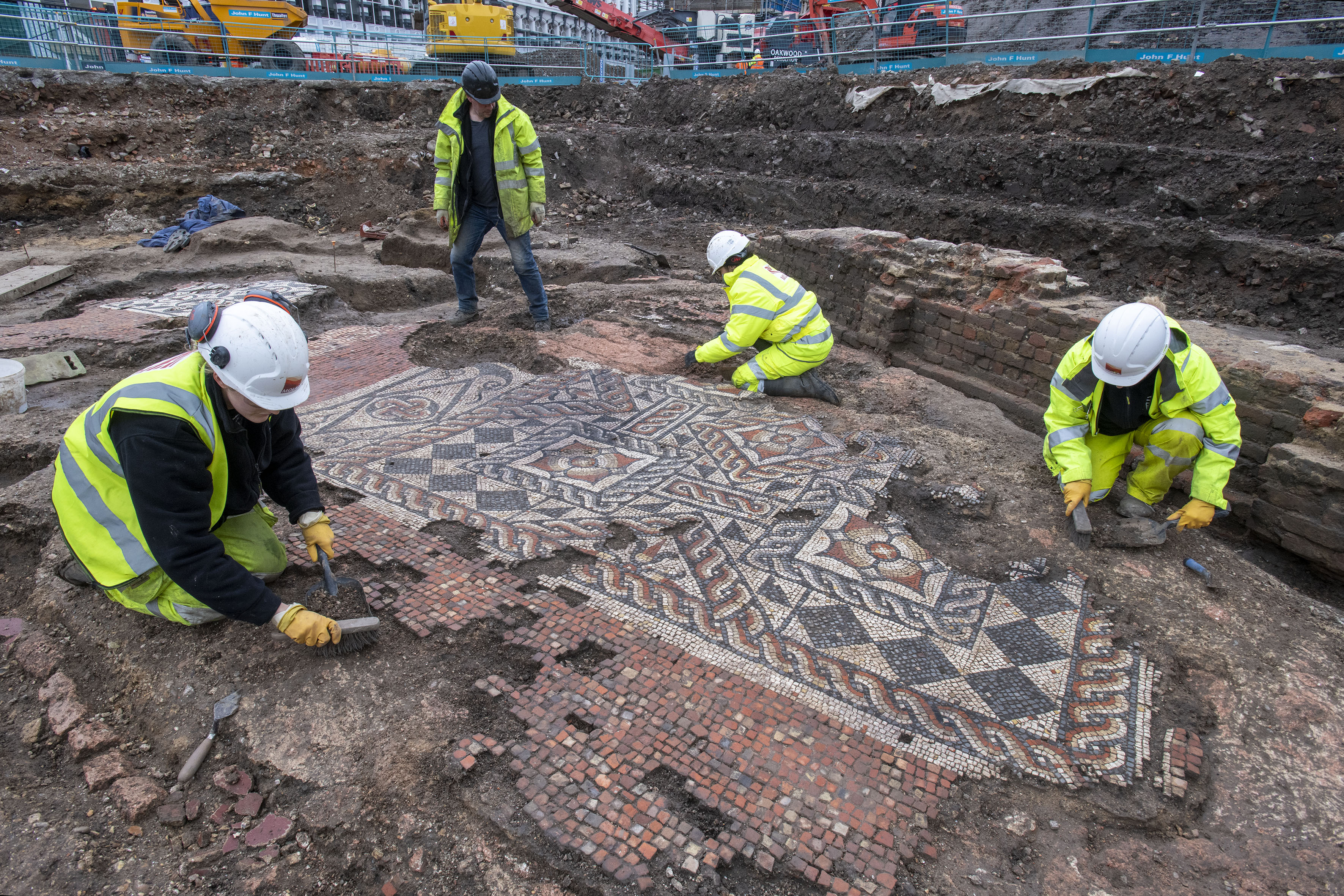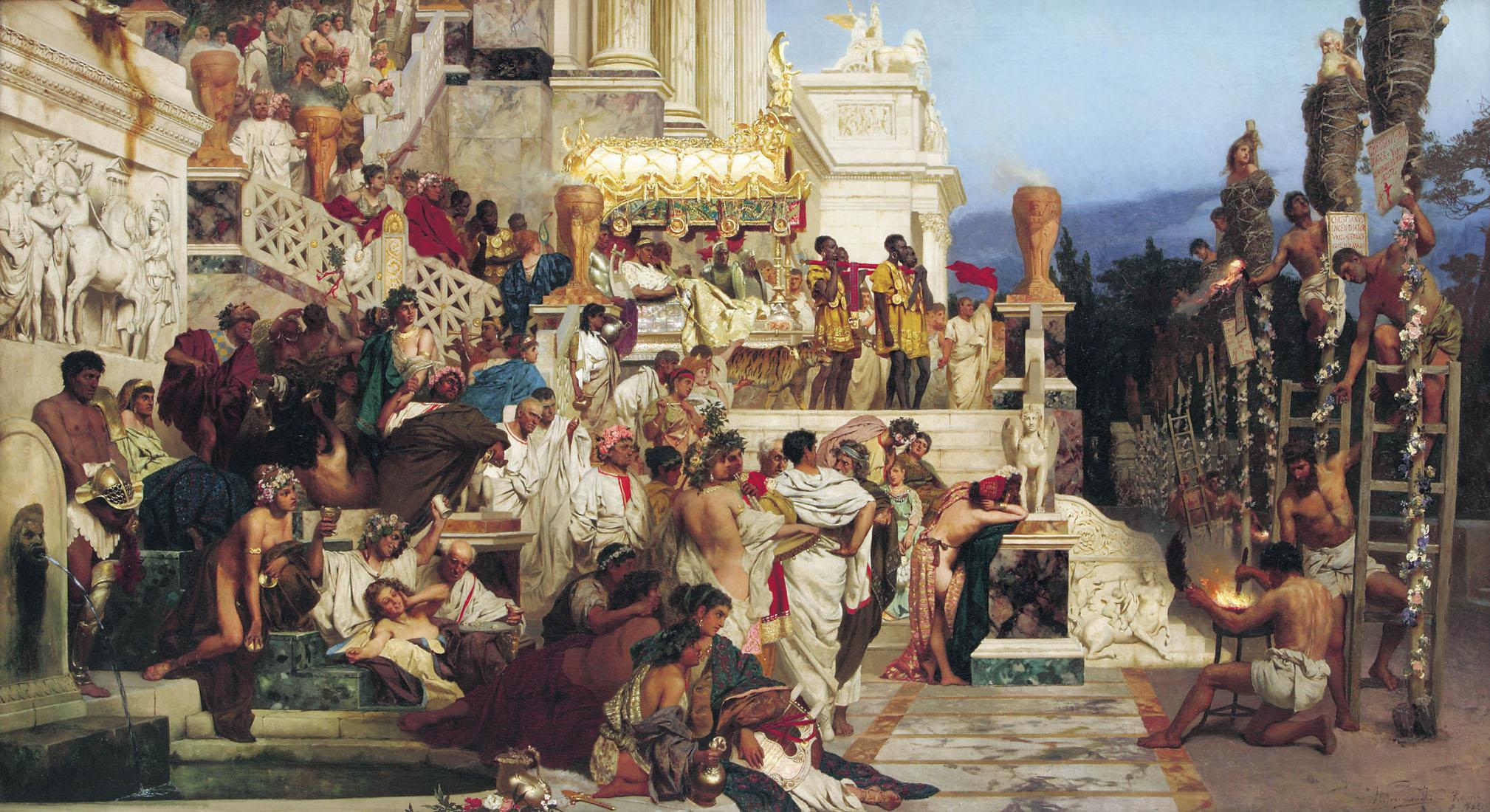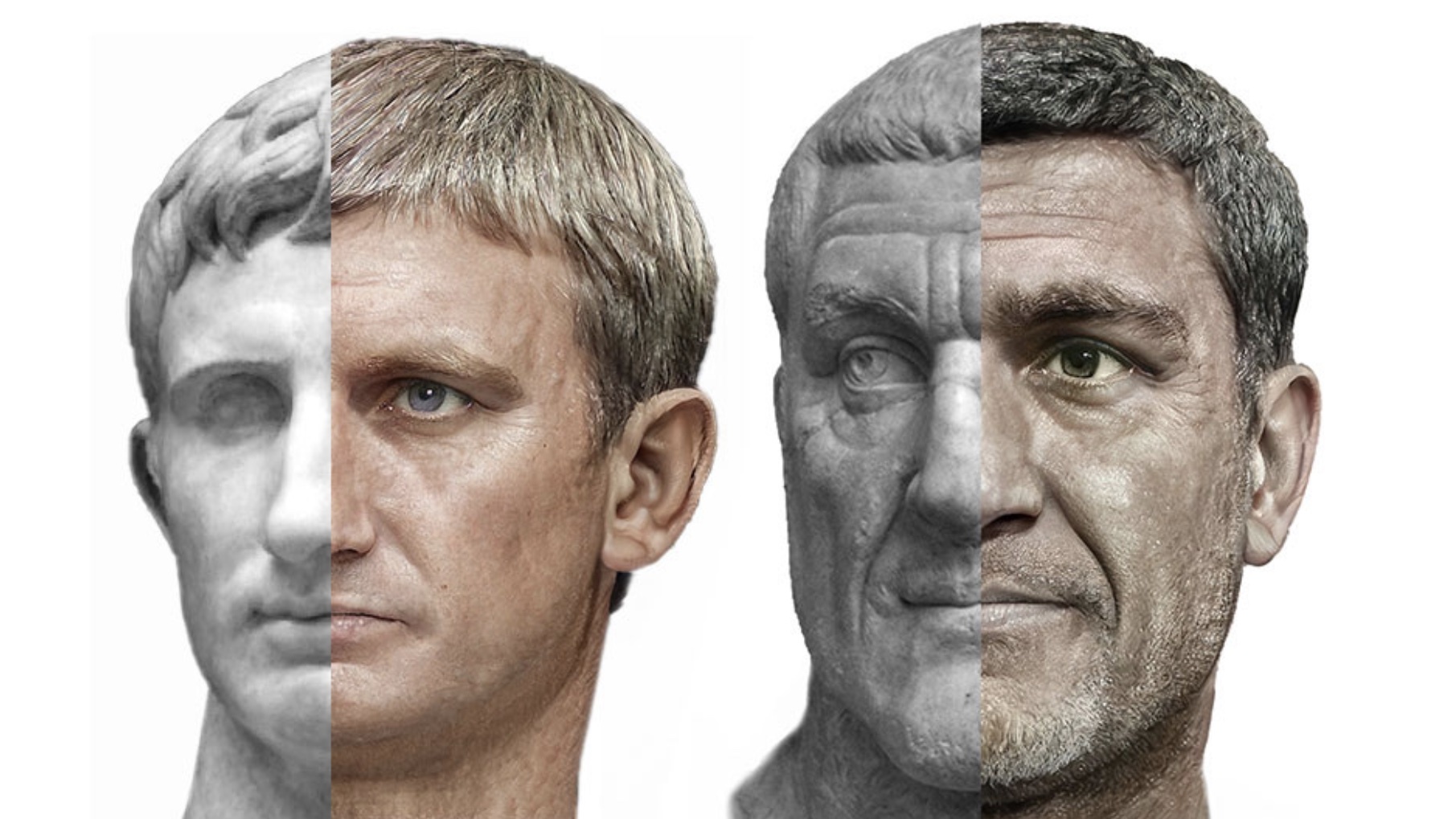“Once-in-a-lifetime” Roman mosaics found in South London

- The ancient mosaics are well preserved, and the largest find in London for half a century.
- Researchers believe they were part of the floor of a mansio, a resting home for wealthy travelers.
- The mosaics are approximately 1,800 years old.
In the shadow of The Shard, the gleaming monument to modern London, archeologists have found a stunning trace of the city’s past: a Roman-era mosaic floor.
The floor, excavated by archaeologists from the Museum of London Archaeology (MOLA) in South London’s Southwark neighborhood, is approximately 1,800 years old, and may have been from a Roman dining room, CNN reported.
MOLA senior archeologist Antonietta Lerz told the Washington Post that the mosaic was a “once-in-a-lifetime” discovery because of its “size, rarity and preservation.”
It may also be the largest mosaic found in London in half a century; because of the city’s density, large mosaics were not commonly made, MOLA director of developer services Sophie Jackson told CNN.
“It is just incredible that it’s survived,” Jackson said. “To actually […] have a whole big spread of mosaic like that in a definable room — we think it’s a dining room — is really amazing. And it looks really nice as well, it’s just really pretty, actually.”
Where the City of London sits on the banks of the Thames today was originally founded as Londinium, a key Roman site in this foggy, far-flung corner of the empire.
Archeologists have known that what is now Southwark had at one point been home to brothels, but recent discoveries have pointed to something a bit more mixed-use.
Previous digs have uncovered what are believed to be the remains of a large, wealthy family’s home, Artnet reported, and the archeologists believe these mosaics may have adorned the floor of another high end home or a mansio, a resting house for travelers — think a sword-and-sandal Savoy.
Travelers may have stopped at the mansio for food, rest, networking, and to “show off, feel important,” Jackson told the New York Times. The beautifully adorned floors and size of the room suggests it may have been designed for the upper ranks of Roman officers to use.
“The people — probably men in this case — would be lying on the couches, leaning on their left shoulders, eating, being fed food, and looking south into the bigger room, sort of admiring the mosaic,” Jackson told CNN.
That mosaic is, even after all these centuries, still striking. Solomon’s knots like frozen pinwheels flank stylized flowers framed by ropes and inset ski map diamonds in navy, brick red, and bone. A second mosaic lies below it.
“Often British mosaics can get a little crude,” mosaic expert David Neal told the NYT, “these are brilliantly done.”
Archeologists are continuing to excavate the site, and the mosaics will likely eventually go on public display.





